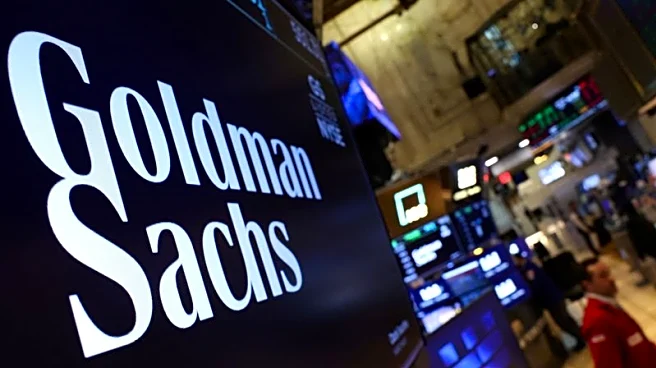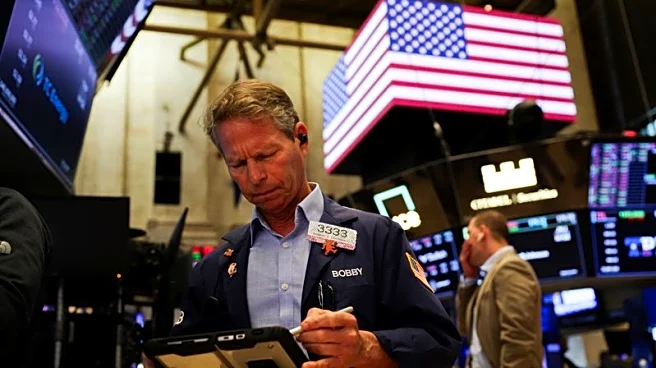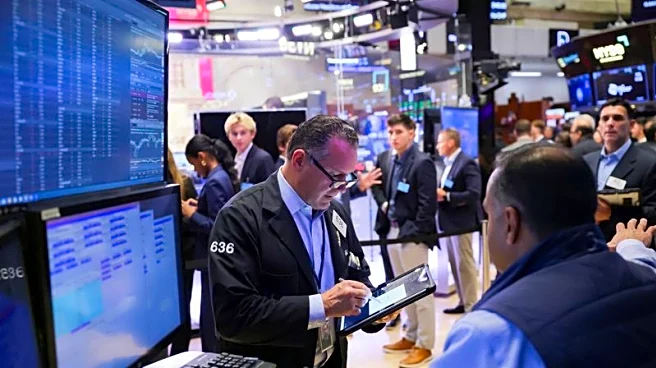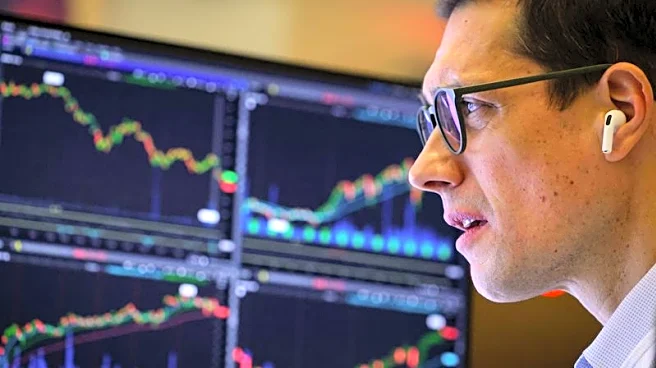What's Happening?
China has become a pivotal force in driving gold prices to unprecedented levels in 2025, as highlighted by Torsten Slok, chief economist at Apollo Global Management. Slok points out that China's influence
extends beyond central bank purchases, involving significant household demand and speculative trading. Gold withdrawals from the Shanghai Gold Exchange surged to 118 tonnes in September, reflecting robust safe-haven demand. This activity coincides with macroeconomic uncertainties, including U.S.-China trade tensions and dollar depreciation, which have further fueled gold's appeal as a secure asset. The People's Bank of China has consistently increased its gold reserves, marking its 11th consecutive monthly purchase, contributing to a price floor that encourages institutional and private investment.
Why It's Important?
The surge in gold prices has significant implications for global economic stability and investment strategies. As the U.S. dollar faces depreciation and trade tensions with China escalate, gold emerges as a preferred asset for investors seeking security. This shift could lead to a reevaluation of traditional currency reserves, with central banks potentially holding more gold than U.S. dollars. The increased demand for gold reflects broader economic uncertainties, prompting institutions like Goldman Sachs to raise their price forecasts. The trend underscores a potential long-term shift in investment behavior, with gold and Bitcoin gaining traction as alternatives to fiat currencies amid inflation and systemic instability.
What's Next?
The ongoing U.S.-China trade tensions and economic volatility are likely to continue influencing gold prices. As President Trump and President Xi Jinping prepare for upcoming discussions, potential policy changes could further impact global trade dynamics and investor confidence. Analysts predict that if current trends persist, gold prices could reach $5,000 by 2026 and $10,000 by 2028. This scenario suggests a prolonged period of high demand for gold, driven by geopolitical risks and economic uncertainties. Investors and policymakers will closely monitor these developments, assessing their implications for global financial markets and currency stability.
Beyond the Headlines
The current gold rally draws parallels to the 1970s, when economic turmoil led to a dramatic increase in gold prices. This historical context highlights the potential for sustained growth in gold demand as investors seek refuge from currency instability. The shift towards gold as a safe harbor asset reflects broader concerns about the reliability of traditional currency systems. As more investors diversify their portfolios to include gold, the market may experience long-term changes in asset allocation strategies, influencing global financial stability and economic policy.













